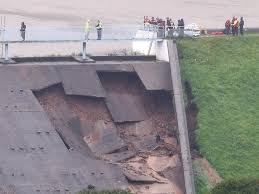Everyone will remember the footage of 1 August 2019, after heavy rainfall caused serious damage to the spillway at Toddbrook reservoir in Whaley Bridge.
The immediate concern was the safety of the residents and visitors to the town as a precaution some 1500 people were temporarily evacuated from their homes and businesses in Whaley Bridge, whilst an immediate drawdown of the water level was instigated, together with urgent measures to shore up and stabilise the spillway.
Today an independent report sent to the environment Secretary George Eustice by Professor David Balmforth has attributed the failure to poor design, exacerbated by intermittent maintenance over the years which would have caused the spillway to deteriorate.
The report found that the spillway design was inadequate and not fit for the purpose of conveying the probable maximum flood, for which it should have been designed.
There is evidence to show that it had deteriorated over its life.
The lack of an effective cut-off between the spillway crest and the impermeable core of the dam would have allowed water to pass into the embankment fill under the spillway chute.
While some of this will have drained downwards through the permeable fill, it is likely that some will have flowed beneath the slabs of the spillway chute causing erosion of its foundation.
In addition, seepage of water through a construction joint in the crest had been observed from time to time flowing down the face of the spillway, and this is likely to have seeped into the longitudinal joints which were not fitted with water bars and had only received intermittent maintenance.
Any erosion caused by seepage flows could have led to some settlement and cracking of the spillway slabs. Satellite data, received towards the end of the Review, suggests that settlement of the slabs in the area of the initial failure may have accelerated in the months leading up to the failure. However, there is no evidence to suggest that this process could account for the large void that was observed to have formed beneath the chute slabs, and into which failed slabs subsequently collapsed.
Some 800 tonnes (400 m3) of material is estimated to have been eroded from the embankment. This would have required large volumes of water with high energy to convey that volume of material off-site and into the river downstream.
That could only have occurred during the actual event, and there is video and photographic evidence to support this.
Various mechanisms might







